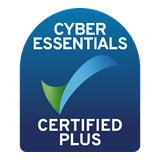Microsoft Teams vs Zoom: Hybrid meetings

In this digital age, hybrid meetings have become a common aspect of the modern workplace, facilitating collaboration between in-person and remote participants.
Microsoft Teams and Zoom have emerged as leading platforms businesses consider for hybrid meetings, each offering many features and functionalities tailored towards improving the hybrid meeting experience for all participants.
What is Microsoft Teams
Microsoft Teams is a key part of Microsoft 365, designed to streamline communication, collaboration and productivity for individuals and businesses. It combines various tools such as video calls, chat, file sharing, and project management.
Key features of Microsoft Teams for Hybrid Meetings
Integration
Microsoft Teams seamlessly integrates with other Microsoft applications such as Outlook for scheduling meetings and SharePoint for file storage, providing a comprehensive ecosystem for team collaboration and enabling a much more productive and seamless experience for users.
Consistent experience
Teams allows participants to join meetings from anywhere, whether they are in the office or working remotely, the experience is consistent for all attendees.
Live Captions and translations
Teams meetings can include live captioning and real-time language translations, promoting inclusivity.
Virtual breakout rooms
Microsoft Teams allows meeting organisers to create and manage breakout rooms, allowing large group to be split into smaller groups, encouraging open discussions and lively conversations.
Meeting recording and playback
With Microsoft Teams, meeting participants can record meetings to later review or for individuals who weren’t able to attend. This feature ensures critical information isn’t missed and enhances accessibility.
Collaborative document editing
Teams enables real-time collaborative editing of documents, presentations, and spreadsheets all within the application, meaning all meeting participants have access to the same documents and can edit in real-time.
Participant engagement
Although initially Zoom had the upper-hand with this, Teams has also incorporated virtual backgrounds and reactions to enhance participant engagement during hybrid meetings, allowing participants to react with the emojis like, love, applause, laugh and surprise.
You can also ‘raise your hand’ during Microsoft Teams meetings, which is particularly helpful when there are many participants wanting to ask questions.
Meeting presenters will receive a notification that your hand is raised and in meetings where attendees can’t unmute themselves, the presenter can allow you to unmute. Teams can also detect when you have spoken, and you’ll be promoted to lower your hand.
Copilot
Microsoft Teams includes Microsoft 365 Copilot, so you can quickly collate key information from your chat threats. Copilot allows you to ask specific questions or use one of the suggested prompts to quickly catch up on relevant information, key points and summarise themes within the chat prior to your meeting. You can find out more about Copilot in Teams here: The next wave of Copilot in Microsoft Teams – Microsoft Community Hub
What is Zoom
Zoom is a versatile standalone video conferencing platform, it rapidly gained popularity, especially during the COVID-19 pandemic, for enabling smooth and high-quality video meetings.
Key Features of Zoom for Hybrid Meetings
User-friendly interface
Zoom’s interface makes it easy for participants to join meetings, interact with features and navigate the platform, making it a user-friendly choice for users of all technical abilities.
Virtual breakout rooms
Similarly to Microsoft Teams, Zoom offers virtual breakout rooms to facilitate smaller group discussions within larger meetings, encouraging participation and collaboration between all attendees in-person and remote.
Polls and surveys
Zoom allows for live polling and surveys, providing meeting hosts real-time feedback from the attendees, regardless of their location.
Recording and Cloud storage
Like Teams, Zoom allows participants to record meetings and store them in the cloud for easy access and sharing with users unable to attend or for future reference.
Webinar capabilities
For larger hybrid events, like webinars, Zoom provides robust hosting capabilities, accommodating for hundreds of attendees.
Comparison: Microsoft Teams vs. Zoom for Hybrid Meetings
Integration and Ecosystem
One of the significant advantages of Microsoft Teams is its seamless integration with other Microsoft products and services such as Outlook, SharePoint, and OneDrive.
This integration allows users to seamlessly access and share files, schedule meetings and collaborate on documents all within the Teams application, creating a streamlined and efficient workflow for hybrid meetings, enabling productivity and collaboration for participants.
For businesses already using the Microsoft 365 suite, adopting Teams for hybrid meetings ensures a unified and familiar experience.
On the other hand, if a business uses a mix of different productivity tools and platforms, Zoom’s range of compatible integration options can be advantageous, though, being a standalone platform, this might require some integration efforts with other applications.
User interface and usability
Zoom has gained significant popularity for its simplicity, user-friendly interface and reliability in delivering high-quality video and audio experiences. It offers a seamless meeting experience across various devices and platforms, ensuring compatibility and accessibility for all attendees.
Zoom has also been praised for its intuitive and easy-to-navigate interface, making it simple for users to schedule, join and manage meetings.
Meanwhile, Teams provides robust meeting management capabilities. Users can set meeting agendas, share meeting notes and integrate with Microsoft Outlook to schedule, join and manage meetings.
Additionally, Teams offers features like live captions to enhance the meeting experience for both in person and remote participants.
Both platforms offer many user-friendly features such as screensharing, virtual backgrounds and breakout rooms to enhance the meeting experience for both in-person and remote participants.
Scalability
In terms of scalability, both Microsoft Teams and Zoom can accommodate a large number of attendees in hybrid meetings.
Microsoft Teams provides robust scalability for meetings with support for up to 10,000 attendees in a single meeting, and this is increasing to 20,000 through December 31st 2023, so Teams is suitable for large webinars and events. For these large meetings, participant engagement is managed through a Q&A experience.
Additionally, live events with up to 100,000 participants can be arranged through the Microsoft 365 assistance program.
On the other hand, Zoom has gained recognition for its ability to handle meetings with a significant number of attendees. However, this is limited by the plan you are on.
The free plan allows for up to 100 participants per meetings, while the largest plan allows for up to 1000 participants per meeting. For larger scale meetings, the webinar license allows you to broadcast a Zoom meeting to up to 50,0000 view-only attendees, depending on the size of your webinar license.
Familiarity
Another consideration is the familiarity of the platform for participants, for example, if most participants are already familiar with either Microsoft Teams or Zoom, it may be ore convenient to set up a meeting using the platform they are comfortable with, as this reduces the learning needed and ensures a smooth transition to hybrid meetings.
Price
Lastly, pricing and licensing models should be taken into account when considering either Microsoft Teams or Zoom for hybrid meetings. Both platforms offer various subscription plans with different pricing tiers.
Overall, both Microsoft Teams and Zoom offer powerful solutions for conducting hybrid meetings. Microsoft Teams stands out for its seamless integration with the Microsoft 365 suite, comprehensive collaboration features and scalability, while Zoom excels with its user-friendly interface and wide range of integration options.
Ultimately, the choice depends on factors such as integration preferences, specific meeting needs and budget considerations.





